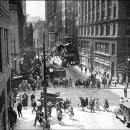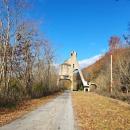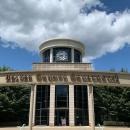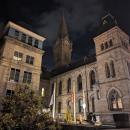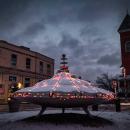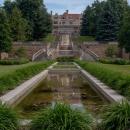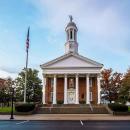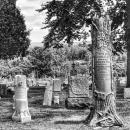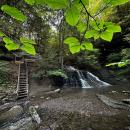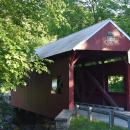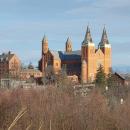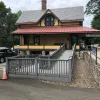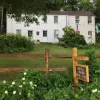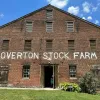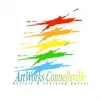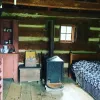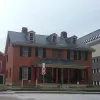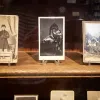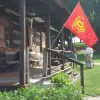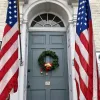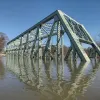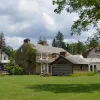St. Stephen's Old Stone Church is a Protestant Episcopal Church located near the remains of the Bradys Bend Iron Company furnaces. In 1867, the company's trustees granted a parcel of land to each of six religious groups upon receiving $1.00.
Southwestern Pennsylvania
The southwestern corner of Pennsylvania is the area that was the original Washington County, formed on March 28, 1781. This is the land to the west of the Monongahela River, from the West Virginia line north and west and south of the Ohio River to the Ohio line.
Parts of the original Washington County are now Greene and portions of Beaver and Allegheny Counties. Both Pennsylvania and Virginia initially claimed this Southwestern Pennsylvania portion of the Commonwealth.
The first National Road, Route 40, came through our area, along with endless visits by the famous surveyors George Washington, Lafayette, George Rogers Clark, James Monroe, Andrew Jackson, and many other renowned people.
Join Western Pennsylvania and Pittsburgh Museums to learn more about the county's notable ancestry—and possibly your own.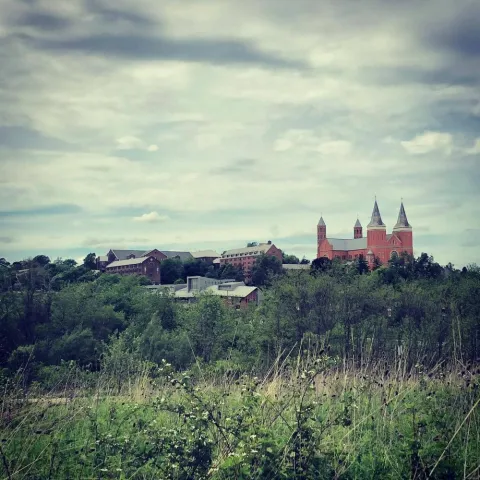
Museums
The Ligonier Valley Rail Road Museum is located in a restored station, focusing on the history of the LVRR. Includes authentic bobber caboose.The museum, maintained by Ligonier Valley Rail Road Association, is a non-profit corporation that was organized to:
The historic Flatiron Building, constructed around 1830 along the National Road, was initially built for commercial use. Its distinctive wedge-shaped design—resembling a traditional clothing iron—has made it a prominent landmark in the Brownsville.
This modest five-room farmhouse in Springdale, Pennsylvania, is the birthplace and childhood home of Rachel Carson, the ecologist whose groundbreaking 1962 book Silent Spring awakened global awareness of environmental responsibility.
The Southern Alleghenies Museum of Art at Ligonier Valley is the perfect setting for a stroll, either outside surrounded by our beautiful flower gardens or inside amongst our rotating exhibitions of American art.
The opening of western Pennsylvania to settlement was the result of a decisive victory over the Native Americans at the Battle of Bushy Run, August 5th and 6th, 1763.
Go back over a hundred years and take a new look at a period in Pittsburgh’s history often characterized by the extremes of late 19th-century America: fabulous wealth and grinding poverty.
The mission of the West Overton Museums is to illustrate the history of West Overton Village, its distillery, coal and coke heritage, and the birthplace of Henry Clay Frick.
Victorian Vandergrift Museum is located in the Old Sherman School, 184 Sherman Avenue in Vandergrift, which is currently undergoing massive renovations for our use.
The Museum, built in the 1850s, was a typical Greene County farmhouse made of locally fired brick. In the late 1800s, several wings were added, and it became the Poor Farm to house the county's indigents. They planted crops and raised farm animals that fed them.
ArtWorks Connellsville, located next to the Connellsville Canteen, is home to over 85 local and regional artists. It is the only art gallery and learning center of its kind in the area.
Zelienople Historical Society acquired the Passavant house in 1975, and today this historic building serves as a museum, the Lester Mohr Library, and the headquarters office for the society.
Come to Fort Ligonier and journey back two centuries to a place where the flag of His Majesty King George still flies! Relive the stirring days of young Colonel George Washington and General John Forbes and the encounters of the British and Americans against the French and Indians.
The Cal Lynch art studio and gallery building is located next to my home in the beautiful mountains above Confluence. Cal Lynch is a nationally recognized artist with paintings accepted in over a hundred juried shows around the country.
The Buhl House is the second historical house museum of the Zelienople Historical Society, located on South Main Street near Passavant House. Built in 1805, it is the oldest building in Zelienople, where Christian Buhl and his wife raised their eleven children.
The Fort Pitt Museum, located at Point State Park in Pittsburgh, showcases the strategic importance of the "Forks of the Ohio" during the French and Indian War and the early development of Pittsburgh.
Coal & Coke Heritage Center is focused on the coal and coke industries Connellsville Coke Region in the roughly hundred year span of 1870-1970 the captains of the sector whose vision, determination, tactics and resources were responsible for the emergence of industrial behemoths and the amass
Built in 1828 as a summer residence for Butler's only U.S. Senator, Walter Lowrie, this is the last remaining house of its type in the Butler area. A listing on the National Register of Historic Places honored its historical and architectural significance.
Founded in 1849, Waynesburg University (college) has a rich historical tradition. The University is proud to share its history and local history in the Paul R. Stewart Museum, located in the basement of Miller Hall on the main campus.
The Connellsville Canteen is a recreated "Business and Occupation". A train Station that commemorates the women who served the troops on trains passing through during World War II.
Red School House is the first public school in Butler, built in 1838 due to the Public School Act of 1836. It was used as a classroom until 1874, when a larger facility was built.
The Photo Antiquities Museum of Photographic History boasts an extensive collection of photographs, primarily dating from the 1840s to the 1950s. Photographs from the archives are now being cataloged and digitized into a computer indexing system.
G Squared Gallery is a decorative shop and gallery located in Ligonier. Nicely nestled into the corner between Citizens Bank and The Creamery, you can’t miss its vibrant storefront decor and festive window.
The original cabin, built by the Cooper family in 1810, was used as a county homestead. It was enlarged after the Civil War, and family descendants remained in it until 1963. In 1976, Cooper Cabin was deeded to the Butler County Historical Society.
Organizations
The Allegheny-Kiski Valley Historical Society is a non-profit, permanent institution whose primary mission is interpreting, preserving, and celebrating our cultural, industrial, and ethnic heritage of the Allegheny and Kiskiminetas river valleys in southwestern Pennsylvania, a region embracing th
Founded in 1908, the Westmoreland County Historical Society is dedicated to promoting and fostering knowledge, understanding, and appreciation of history in general, as well as all aspects of the history of Westmoreland County and its people, including those areas within its former boundaries.
The Zelienople Historical Society maintains a museum in Passavant House with many of the original articles brought by Zelie.
Based at the University of Pittsburgh and housed in the Stephen Foster Memorial, the Center for American Music is a library, archive, and museum dedicated to expanding and documenting knowledge of American music and its role in Americ
This Society attempts to fill the historical and genealogical needs for all within a 35-mile radius that do not have a historical organization of their own. They presently own and maintain two cemeteries:
Long before European colonists arrived, the land that is now Butler County, Pennsylvania, was under the control of the Iroquois Confederacy. This changed in 1753, when the French began establishing a series of forts in the region, culminating in the French and Indian War.
The Historical & Genealogical Society of Indiana County in western PA serves a largely rural area noted for its forest, mineral resources, and scenic beauty. In 1938, it was founded as a private membership organization.
Once considered New Castle’s “best kept secret”, the word is out on the Hoyt Institute of Fine Arts and its vision to “provide the best possible arts to the greatest number of people”!
Incorporated on February 22, 1988, the Ellwood City Area Historical Society is dedicated to preserving and promoting the rich history of our community.
The Lawrence County Historical Society is located in New Castle. The home of former tin plate mogul, George Greer, is resplendent in its glorious woodwork and fine leaded beveled glass made by the Fry Glass Company in Rochester, Pennsylvania.
The Foundation established in 1971, December 14, is a non-profit organization. The name of Beaver County Historical Research and Landmarks Foundation comes from the County name where it is situated.
The Fayette County Historical Society is a non-profit organization established in 1971. Its mission and purpose are to find, collect, and preserve materials that portray the history of the county and the society.
The Society's goal is to arouse interest in local history and historic preservation through education, publications, meetings and events. Since its inception, the Society has grown to include more than 550 members and a permanent museum.
The Latrobe Area Historical Society of Westmoreland County, Pennsylvania, is dedicated to the collection, study and documentation of the Latrobe community's heritage and to the preservation of local history and its ethnic roots.Periodically the Society offers to the public special programs of his
The mission of the Ligonier Valley Historical Society discover, collect, preserve and disseminate any material which will help to establish or illustrate the exploration, settlement, development and general history of the Ligonier Valley area.
The McKeesport Heritage Center operates a museum and a research center. The museum has numerous displays of local memorabilia, including old photographs.
The mission of the Society for Contemporary Craft is to engage the public in the creative experience as expressed through contemporary craft.The organization seeks to move viewers beyond familiar frames of reference and challenge them to think in new ways about art, while also raising standards o
Opened in October 1988, Perryopolis Area Heritage Society is managed by local enthusiasts who want to preserve, promote, and develop the town's and neighborhood's historical structures and heritage. It is a Pennsylvania-chartered organization with 501(c) (3) not-for-profit status.
Organized in 1994 with 11 members, the Smock Historical Society preserves the heritage of the coal mining community, Smock, and the neighborhood.
The William Pitt Union, originally opened in 1898 as the grand Hotel Schenley, has been magnificently restored and now provides students with recreational and social facilities. Its amenities include beautiful study and social lounges, 19th-century ballroom, and modern offices.
